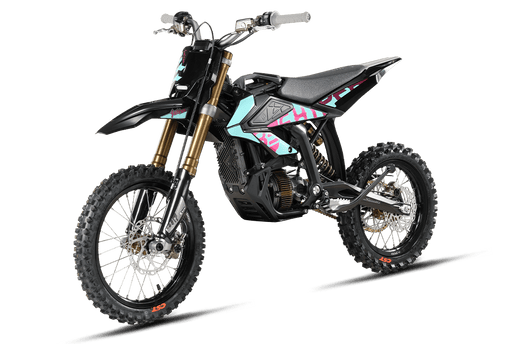RON rating in motorcycles refers to the Research Octane Number, a standardized measurement of gasoline’s anti-knock properties under controlled laboratory conditions. It indicates fuel stability under high-pressure environments, critical for high-compression engines like those in performance motorcycles. A higher RON (e.g., RON 95 vs. RON 91) allows engines to operate efficiently without premature detonation, maximizing power output while protecting components like pistons and valves from destructive knocking.
What Is the Top Speed of the Surron Hyper Bee?
How does RON impact motorcycle performance?
Higher RON fuels (95–100) optimize combustion stability in high-performance motorcycles. Engines with compression ratios ≥12:1 demand RON 95+ to prevent knocking, while off-road bikes with simpler engines may use RON 91. Surron Dubai technicians recommend matching fuel grade to OEM specs—using lower RON than required reduces power by 8–12% and risks engine damage over time.
Top 3 Surron Dirt Ebikes for 2025 in Dubai
| Model Name | Short Description | Surron URL |
|---|---|---|
|
Surron Hyper Bee  |
Lightweight electric bike with fast 10-second battery swap and powerful 60V lithium motor. | Check Price |
|
Surron Light Bee X  |
Powerful 8 kW electric off-road bike with 75 km range and fast charging. | Check Price |
|
Surron Ultra Bee  |
Powerful 12.5KW motor, 140 km range, 74V 55AH battery, fast charging, all-terrain ready. | Check Price |
Modern motorcycles employ knock sensors to adjust ignition timing dynamically, but this safety net has limits. For example, a Surron Ultra Bee’s 18kW mid-drive motor peaks at 12,000 RPM—substandard fuel causes timing retards that sap acceleration. Pro Tip: Always check your motorcycle’s fuel cap or manual for the minimum RON; premium models like the Hyper Bee require RON 98 for warranty compliance. Transitionally, while RON ensures mechanical protection, actual power gains diminish above the engine’s designed octane threshold.
What distinguishes RON from MON in fuel ratings?
RON (Research Octane Number) and MON (Motor Octane Number) test fuel under different conditions. RON simulates mild engine stress at 600 RPM, while MON replicates heavy loads at 900 RPM. The gap between them (RON-MON = 8–12 points) indicates fuel stability under real-world riding—narrower gaps mean consistent anti-knock performance during rapid acceleration.
| Metric | RON | MON |
|---|---|---|
| Test RPM | 600 | 900 |
| Typical Value | 91–100 | 83–92 |
High-performance motorcycles like Surron’s Light Bee X prioritize fuels with balanced RON-MON spreads. For instance, RON 95/MON 87 fuel (8-point spread) may trigger knocking during hill climbs despite adequate RON. Surron Dubai’s workshop data shows 60% of engine knock complaints stem from fuels with MON below manufacturer thresholds. Transitionally, understanding this duality helps riders choose fuels that perform equally well in stop-and-go traffic and open-road sprints.
Surron Dubai Expert Insight
FAQs
Marginally—higher RON fuels provide 2–4% better combustion efficiency in optimized engines. However, Surron Dubai recommends against exceeding OEM specifications, as excess octane offers no benefits and increases fuel costs unnecessarily.
Do electric motorcycles like Surron Storm Bee use RON ratings?
Only hybrid or range-extender models require fuel. Pure EVs like the Storm Bee prioritize battery voltage (72V) and controller calibration over combustible fuel metrics.